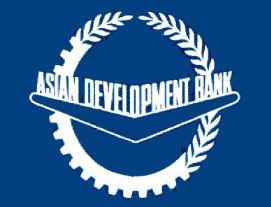
MANILA (Mindanao Examiner / Oct. 3, 2012) – The Asian Development Bank (ADB) has upgraded to 5.5 percent from 4.8 percent last April its growth forecast for the Philippines for 2012 given the strong expansion in the first half of the year.
However, it maintains 5% growth projection for next year considering the higher importation of materials for electronics, the country’s major export earner.
“Net exports can be the growth driver (for the economy),” ADB Senior Country Economist Norio Usui said in a briefing Wednesday.
The economy grew by 6.1 percent in the first half this year, slightly higher than the five to six percent full year target. The growth was traced to improvement in government spending and exports as well as robust consumer spending.
The Manila-based lender projects rate of price increases to settle at 3.5 percent and 4.5 percent for 2012 and 2013, respectively. These levels are within the government’s three to five-percent target until 2014.
It also eyes Philippine exports to grow by seven to eight percent this year, and by six to seven percent next year. These are lower than the government’s 10 percent target for 2012 and 12 percent target for 2013.
Usui, however, pointed out that although the domestic economy continues to post growth, more jobs need to be generated.
Relatively, the government is firm on its bid to implement the public-private partnership (PPP) initiative.
The ADB economist said improvement in the country’s infrastructures is one way of ensuring continued growth of the economy.
He, however, said that more than the PPP projects, the government should increase its own infrastructure spending because the projects to be funded with the help of the private sectors are primarily based on the cities and not in far-flung areas, which are badly needing social infrastructures.
Another way to ensure the solid growth of the economy is through the improvement of the country’s manufacturing sector, he said.
Usui explained that aside from the services sector, which is boosted by among other the business process outsourcing (BPO), contribution of the manufacturing sector, once it is developed, will be huge.
He said the manufacturing sector can employ more people because it accepts even those who are high school graduates.
“If this happens, then growth will be more inclusive,” he said, noting that the Philippines is among the few countries in Asia that has not boosted its manufacturing sector despite the large supply of people who can be employed in this sector.
Usui said a growth rate of about five percent for the Philippines can be sustained with the help of a strong manufacturing sector.
“If you don’t take action now nothing good will happen in the future,” he added.
ADB Country Director for the Philippines Neeraj Jain said during the same briefing that the domestic economy cannot rely on election spending as growth booster in the coming months.
ADB projects a slower expansion for the domestic economy in the second half this year due to combination of negative external developments and base effect of year-ago’s low public spending.
Thus, Jain said the government should continue to increase its expenditures on social services and infrastructure to enable ensure the robust growth of the economy.
“If government spends more in the last quarter then a high growth can be achieved,” he added. (Joann Santiago)

